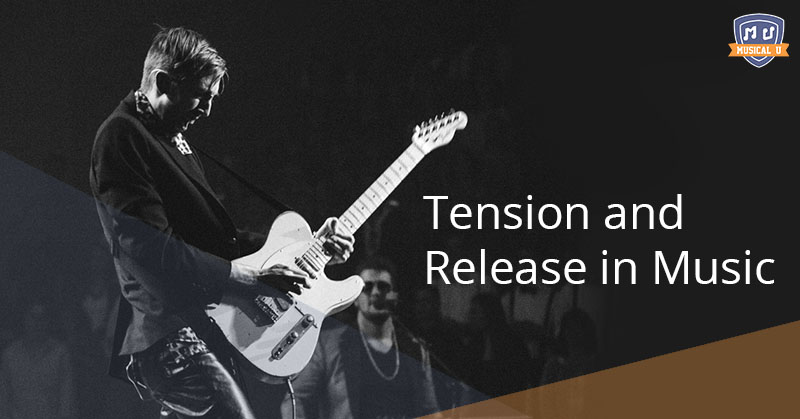The art of music is all about tension and release. Creating moments of unrest and building an instrumental turmoil requires a subsequent resolution. This progression of tension and release hooks listeners as they begin to feel that moment of liberation at the end.
When done right, this musical “conflict” is subtle, yet moving, and keeps listeners coming back for more. There are several different ways to achieve this when you are writing and playing music and all are important to consider during the creative process.
1. Rhythm
The use of syncopation creates a sense of rhythmic tension by playing off the beat. Katy Perry’s song, “Roar,” is a perfect modern example of this. The syncopation begins during the chorus – the rhythmic emphasis falling to the natural beat and the off beat.
How it works: To create a release when you’re writing music, try aligning chorus lyrics more on-beat with less syncopation. Playing off the beat creates rhythmic tension, while playing on the beat resolves it.
2. Instruments
Listeners can identify when a certain instrument is added or dropped from the mix. Tension is created as instruments are added moving forward into a song. The same is true when instruments are removed. For example, drums might be taken out of a verse or violins silenced in the chorus. Check out EMAs “The Grey Ship” for a slow-building example:
How it works: To release tension created by dropping instruments, try adding these missing instruments back in and then ending the song with the same mix of instruments used at the start.
3. Dynamics
A simple use of a crescendo creates exciting tension. By having instruments play louder at the end of a verse, the tension rises and listeners wait for the release. Try using a cymbal, drums, or backing instruments to create heightened dynamics. Nirvana’s “Smells Like Teen Spirit” uses subtle changes in dynamics and also adds and removes instruments to create tension.
How it works: Since louder sounds create tension, it makes sense that softer sounds will release it. However, you can also create tension by moving away from major sounds and dynamics. In the same way that tension is built through crescendo, it can also be built by gradual or sudden decrescendos. Either way, the change in dynamics can both create and resolve tension.
4. Melodies
The intricate changes in melodies – be it from major chords to minor, lower notes to higher ones, and so on – can create intense changes in emotion and tension. These chords and melodies also typically work hand-in-hand. Take a look at this tutorial from the Essential Secrets of Songwriting blog to get an idea of how to implement melodic tension in your music. This article from Pop Music Theory also does a great job explaining tension in melodies and gives some excellent examples in some well-known songs.
How it works: Melodic tension can be created by avoiding the use of a tonic note in a verse; as the chord progression approaches the tonic chord, try putting a different note in the melody. This will throw listeners off and create the tension. As a release, start using the tonic chord again in the chorus.
Essentially, all music is a gradual increase in tension, followed by a sense of release. Even if they are unaware, listeners anticipate this resolution and may begin to predict when that moment is coming.
The pivotal progression of music feels natural when it truly embraces the different methods of slow rises and soft falls that make a piece come full-circle.
What is your favorite way to build tension in your music?
Let us know by sharing your thoughts in the comments.








I think I have realised that the reason my favourite song is Lover you Shoulda Come Over by Jeff Buckley is the combination and arrangement of tension and release. I’ve always thought a graphic score of that song would be such a work of art. I would be interested to see someone use a piece of visual art as a spring board for tension and release decisions.